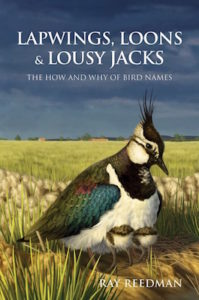Names are powerful things. In many human cultures, the selection of a name for a new baby is a matter of the utmost seriousness, reflective of a family’s, society’s, or religious group’s past as well as perhaps portentous of that child’s own future. So it is also that what particular groups of people, entire races even, are called is a topic that can and has provoked contention up to and including physical violence, even warfare. Yet when it comes to the naming of creatures outside the human family, the situation has been – and continues to be – a bit more plastic.
As the Bard (stand down, all you anti-Stratfordians…) so famously wrote, “What’s in a name? that which we call a rose / By any other name would smell as sweet.” Yet would a Hen Harrier (Circus cyaneus) in the U.K. carry the same implied behavioral connotations if it was called a Northern Harrier, or by an older name, a Marsh Hawk, as it respectively is and was in the United States? One need not delve deeply into the mysteries of ontology to quickly arrive at the conclusion that what things are called can and does affect how they are perceived.
What birds are called, what they have been called, and how their appellations – both scientific as well as common – have changed over time and across cultures is a topic to which Ray Reedman has clearly devoted extraordinary amounts of both study and contemplation. As a result, his Lapwings, Loons and Lousy Jacks; The How and Why of Bird Names is a superb intersection of natural history and etymology, of erudition and personal reflection.
A delightful book very well suited for both educational as well as entertaining reading, Reedman begins by guiding his readers through a short but very useful overview of the history of the naming of birds, both before Linnaeus and after, followed by an explanation of the differences in common names from scientific ones. A firm foundation thus established for his topic, he then enters into the heart of the book, “The Names and Their Stories.”
Not only does he essentially work his way through the British List, providing histories, folk-tales, and his own very well-considered commentaries on the names – sometimes the scientific, other times the common, and in some instances both – of the birds about which he has made an etymological discovery he deemed worthy of inclusion, but he also frequently inserts into his narrative additional information regarding related North American and Australian species (usually brought to his attention as a result of his travels on those continents) as well as Trinidadian birds, in which he seems to have a particular interest.
These stories are narrative natural history at its finest! I don’t mean to be cliché, but if I’m honest, I have to say that one of the things I find most appealing about how the British approach natural history is their uncanny ability to make it simultaneously erudite and homey. Erudite in the remarkable level of scientific depth to which even amateur British naturalists seem perfectly comfortable plumbing, and homey in the delightful way that they can, even in the middle of explaining the most complex subjects, suddenly insert a bit of humor, most often in the form of a pun or some other manner of clever wordplay.
Whether for education, reference, or simple personal enjoyment, Ray Reedman’s Lapwings, Loons and Lousy Jacks is a book that should most certainly be added to the libraries of naturalists, birders, and the generally curious. Its rich and well-composed content will well merit repeated reading – both in part and in full (indeed, I have already found myself repeatedly returning to its pages after my own first reading of it). Furthermore, it will stand the test of time, for even when some of the names Reedman explains have since changed (and as he so well explains, they someday will), Lapwings will remain as a point of reference to what – and more importantly why – they once were.
 Title: Lapwings, Loons and Lousy Jacks; The How and Why of Bird Names
Title: Lapwings, Loons and Lousy Jacks; The How and Why of Bird Names
Author: Ray Reedman
Publisher: Pelagic Publishing
Format: Hardcover
Pages: 303 pp.
Published: 15 August 2016
ISBN: 9781784270926
In accordance with Federal Trade Commission 16 CFR Part 255, it is disclosed that the copy of the book read in order to produce this review was provided gratis to the reviewer by the publisher.
If you enjoyed reading this, please consider signing up for The Well-read Naturalist's newsletter. You'll receive a helpful list of recently published reviews, short essays, and notes about books in your e-mail inbox once each fortnight.
